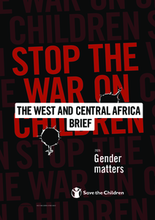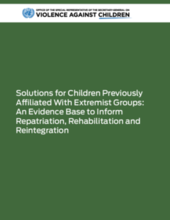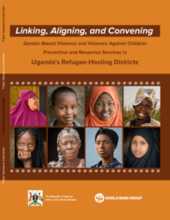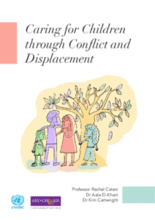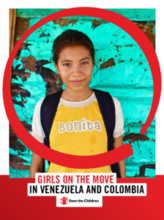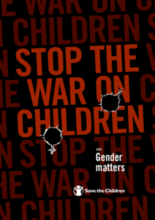Displaying 211 - 220 of 526
This brief - a supplement to the Stop the War on Children 2020: Gender matters report - highlights the situation of children in conflict zones in West and Central Africa with a focus on gender.
This report from the UN Office of the SRSG on Violence against Children explores repatriation, rehabilitation, and reintegration of foreign, Iraqi and Syrian children who are being held in detention on suspected ISIS association or terror-related offenses, or in camps.
The Development Response to Displacement Impacts Project (DRDIP) analysis includes a comprehensive mapping of services for GBV and VAC prevention and response across the key sectors of health, police, justice, and social services in refugee settlements and host communities.
This booklet is based on a pilot study testing the feasibility of delivering and evaluating a light touch parenting intervention for caregivers in the West Bank.
This report consolidates findings from a rapid participatory consultation with: (1) migrant girls in the Northeastern Colombia border region, (2) front-line practitioners providing services to migrant children and their families, and (3) Save the Children teams in Colombia.
This report delves into the differences between boys’ and girls’ experiences through a gendered analysis of the six grave violations of children in conflict, including recruitment of children by armed forces and child abduction. The report makes reference to the vulnerabilities faced by girl heads of household or unaccompanied and separated girls on the move and calls for interventions such as family tracing and reunification, the provision of alternative care for unaccompanied and separated children, and the release and reintegration of children associated with armed forces and armed groups.
No ano de 2019, o mundo foi assolado pela eclosão do novo Coronavírus com os primeiros casos detectados na China.
In this joint policy note, Watchlist on Children and Armed Conflict and Human Rights Watch highlight the increasingly worrying trend of military detention of children affected by armed conflict, a trend documented in at least 15 countries affected by armed conflict.
This article reviews the effects on children and youth of parent–child separation due to several of the most common reasons that are responsible for the growth in this family circumstance worldwide.
Drawing on qualitative research undertaken with adolescents with disabilities from refugee and host communities in Jordan and the State of Palestine, this article critically interrogates the framing of child neglect, which to date has situated the state as a protector rather than a perpetrator, the narrow understanding of adolescent needs and the responsibility of international actors for ensuring that the full range of human rights of adolescents with disabilities is supported.

